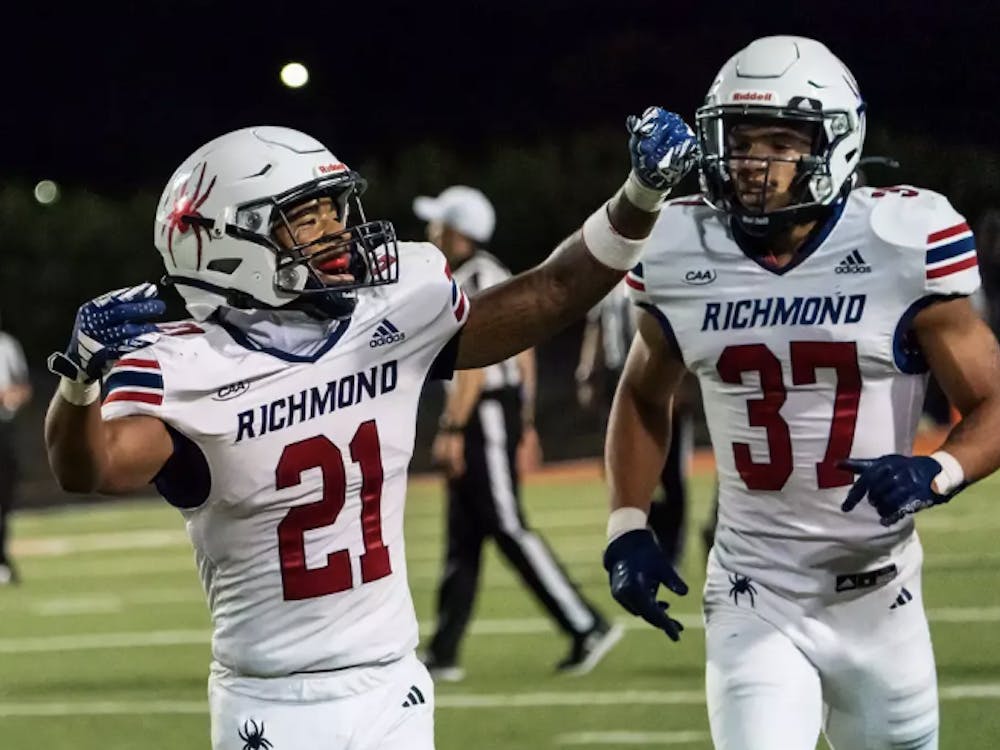For many students at the University of Richmond, sports clubs are an integral part of their college years.
Participating in regular practices and traveling to competitions are woven into these students’ daily lives. Because they are student-run, sports clubs rely on varied sources of funding in order to maintain equipment and stay competitive. The intricacies of this system are ever-changing and growing.
There are three types of funding, said Wendy Sheppard, assistant director of sports and risk management for University Recreation. The first type, allocative funding, is based on a three-tier system, created this year, that strives to ensure that every club receives its fair share of funds.
Clubs are divided into championship, competitive and recreational clubs, with championship being the most active and expensive clubs on campus. Funds are distributed accordingly, with all clubs in each tier receiving the same amount.
The expenses facing championship-tier clubs can be exorbitant. James Bachmann, first-year and president of championship-level club crew, described the expenses facing his club and others like it.
The biggest expenses facing club crew are regattas and hotels, and "because the entry fees to some regattas are [about] $250 per boat … it can get extremely expensive just to compete in a race with one person," Bachmann said. "When you start getting up to 10 people, 15 people, 20 people, the price really stacks up. So that’s why we’re very proactive and make sure we’re really careful with how we’re spending our money.”
Next year will be the first time that funding will be awarded based on the tiers, and teams are placed in each classification by tallying points throughout the year. Points can be earned through attending sports club council meetings and taking inventory, for example.
The current championship-level teams are crew, synchronized swimming, men’s ultimate frisbee, men’s rugby, Quidditch, men’s ice hockey and equestrian, Sheppard said.
“Most of them were grandfathered in with this new tier system, but they are required to get the most points," Sheppard said. "The ways that we accrue that -- like, participating in competitions -- so there’s no guarantee that they will stay that way. We have a policy here that if we have a [Division I] alternative, those clubs are usually not eligible to become a championship team. We are going to reconsider that policy.”
Before this new system was introduced, sports club presidents were tasked with submitting budget proposals, and students often inflated the amount of money they would need, Sheppard said.
Endorsing the decision to switch to the tiered system, Sheppard said, “All of our clubs -- we have 32 right now -- and I would say at least 29 have been around for at least several years, and we know their spending habits. We know which ones are involved in national leagues who need more money versus some of our more recreational clubs that leave the campus or participate in competitive events.”
The second type of funding comes from the sports club council fund. There is a pool of $5,000 that is managed by the student-run executive council, and representatives of the different clubs can request money during the monthly council meetings.
Enjoy what you're reading?
Signup for our newsletter
“On the first Tuesday of every month, everybody will convene -- all the leaders of the clubs will convene -- and you’ll pose your funding request to the whole group, and then you step out, the council gives their suggestion and then everyone votes on it," Bachmann said.
At sports club council meetings, Sheppard meets with the representatives of the clubs to discuss the plan for the month, completing inventory, budget requests and general updates on the success of the clubs.
Jared de Perio, senior and president of club ice hockey, said: “I feel like at the beginning of the semester, [sports club representatives] are more strict on the money we can distribute because they don’t know if they’re going to use it or not. But we just had our last meeting [in April] and they’re like, 'You can have the money because nobody else is going to use it.'"
The third type of funding comes from fundraising, which clubs are required to participate in. Sheppard praised the supportive parents, alumni and students' friends and family members who have raised “significant money for their groups” through online crowd-funding campaigns and other methods.
Championship-level teams rely on alumni for support because of the enormous costs that come with maintaining membership in competitive leagues and buying proper equipment, Bachmann said.
“We’re very proactive in trying to reach out to [parents and alumni], saying 'Hey, support us!'" Bachmann said. "Just to really help keep up the sentimental [attitude], we have a regatta specifically in the fall where alumni can come back and race in the old boats that they used to race in."
Though they acknowledged that University Recreation was seeking to improve the system, de Perio and Bachmann spoke about the obstacles they’ve faced when it comes to funding.
de Perio said he hadn’t run into much trouble up to this point, and he attributed his issue-free experience to the $1,000 dues that the ice hockey players are required to pay. If dues were lower, he said, he would have had to request much more money from the university.
“I know that there are a lot of other clubs who maybe don’t have as high dues, and towards the end of the year, they realize they’re going to need more money for travel or hotels," de Perio said. "So they end up asking for [money out of the $5,000 pool of] ... reserve funds at sports club meetings. Most of the time, it’s given to them if they ask for something rational.”
Bachmann praised the work of Sheppard and University Recreation in seeking to improve the system. He acknowledged that the system had been set up to try to be fair, but there have been some discrepancies in his eyes.
“It is difficult for certain clubs to function … I have high respect for equestrian because their sport is extremely expensive, and yet they’re getting the same funding as some other championship-level clubs," Bachmann said.
Bachmann stressed that some of these funding issues affect the ability of clubs to be open to all students on campus.
“We have dues of $200 per semester and those are relatively low ... so it’s sometimes very frustrating when I hear certain clubs get the same amount of funding as we do, and we’re such an expensive sport," he said. "I want to make crew more inclusive, but I can’t make it more inclusive unless I’m able to lower the dues. It is frustrating, but I don’t know how better to streamline the process off the top of my head.”
The new tiered system is in an experimental phase, and sports club representatives and Sheppard alike hope it will provide a more fair and balanced solution for distributing funding.
Contact sports writer Cassie Coughlan at cassie.coughlan@richmond.edu.
Support independent student media
You can make a tax-deductible donation by clicking the button below, which takes you to our secure PayPal account. The page is set up to receive contributions in whatever amount you designate. We look forward to using the money we raise to further our mission of providing honest and accurate information to students, faculty, staff, alumni and others in the general public.
Donate Now



